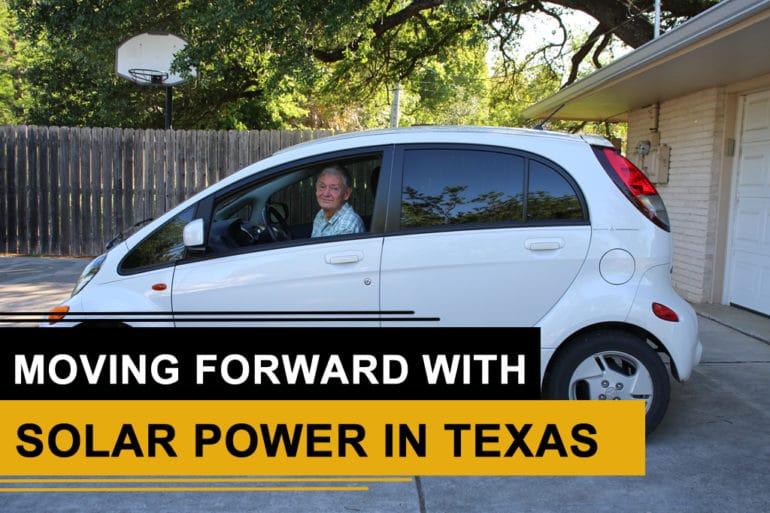
We inspire our clients and they inspire us.
Find out how you can charge your electric vehicle with solar.
There is no I in solar, but there is a U in sun. Solar power in Texas is growing in capacity and it’s because of you and people like Alan Montemayor.
Montemayor is a San Antonio native, who attended Mount Sacred Heart School and Lee High School. Montemayor has a bachelors of science degree in mechanical engineering from Texas A&M University.
At one point he moved to California to work in alternative fuels.
Then Montemayor came back to his hometown and worked at Southwest Research Institute up until 2010. He was with Southwest Research Institute for 25 years.
Today, Montemayor sits on the board of the Greater Edwards Aquifer Alliance and volunteers with the Sierra Club.
So, why are people like Montemayor making a difference with solar power in Texas and in San Antonio?
Montemayor and his wife reside in a 100% windtricity home.
They pay CPS Energy “a little extra” each month to account for their energy as if it was coming from the wind farms. And with plans to switch to solar energy and drop their windtricity, Montemayor hopes the amount of energy that comes from the sun in his house will power 100% of their use. “The most important thing in solar is to first minimize your use of energy to make the house as efficient as possible,” said Montemayor. Their home was originally built in 1959 and was “poorly insulated”.
In 1986, Montemayor and his wife moved in and he immediately installed an energy efficient air conditioning unit, water heater, R-38 insulation in the ceilings and blown-in insulation. Since then, Montemayor has installed energy efficient appliances, replaced all their exterior windows and doors with double pane argon, and replaced light bulbs with LED bulbs. They also minimize their energy use by controlling their thermostat.
Montemayor and his wife are proud to be moving toward solar. In fact, they are not doing it to save money, but rather to set an example for neighbors and anybody who passes by their neighborhood. “The solar panels [will be] located on the front of the house, where people can see them,” added Montemayor.
Since his retirement, Montemayor and his wife have been traveling the world. They’ve been to 64 countries. Solar power in Texas isn’t the only place Montemayor has experienced solar. In fact, Montemayor and his wife have seen it all over the world. “We’ve been to the opposite end of extreme large concentrated solar arrays in Spain, where they have these huge mirrors that reflect the sunlight up to a central tower and a big boiler in the tower that generates electricity,” said Montemayor. “We’ve seen it on islands, where electricity is very expensive.”
Solar energy isn’t the only renewable that strikes interest with Montemayor. He would like to see electric vehicles continue to transition as well. Montemayor owns a 2003 hybrid Prius and a 2014 Mitsubishi i-MiEV, which is a battery electric vehicle.
The Mitsubishi ranges up to 60 miles and drives at 3 cents a mile. Right now Montemayor hopes to become the first person in San Antonio to have South Texas Solar Systems Inc. install for him the first inverter that is SolarEdge EV ready, which is an inverter that will have an EV charger integrated into the inverter. “So, theoretically, when the sun is shining and CPS Energy is active, I will be able to combine solar energy and grid energy and fast charge my vehicle,” explained Montemayor.
Montemayor encourages the San Antonio Water System (SAWS) and CPS to adopt renewable energy. “I’m a realist. I realize getting to 100% renewables is not necessarily going to be an easy thing. What we really need is energy storage associated with our solar and our wind,” said Montemayor.
Right now CPS has a pilot program at Southwest Research Institute to generate power with a large solar array and store that energy with a big battery.
Then there is the ongoing discussion between SAWS and CPS about a large solar array to be located at SAWS H2Oaks Center, which is their desalination facility. “If it passes it will be wonderful for San Antonio. In such an event, such as a big power outage San Antonio will still be able to have water supply powered with the storage energy using the storage water that is in the aquifer storage facility,” explained Montemayor.
